Vuoi iniziare a pattinare sul ghiaccio nel 2025? Che tu sia un adulto che mette piede sul ghiaccio per la prima volta o un genitore che acquista il primo paio per il proprio bambino, scegliere i pattini giusti fa tutta la differenza. Ecco il punto: i pattini per principianti devono puntare su comfort, supporto alla caviglia e facilità d'uso. E se sei aperto a provare qualcosa di nuovo, Snowfeet* offre un tocco divertente agli sport invernali con mini Skiskates che funzionano con i tuoi normali stivali invernali.
Punti chiave:
- Basi del pattinaggio su ghiaccio: Per i principianti, i pattini da figura sono la scelta ideale. Sono stabili, indulgenti e progettati per aiutarti a scivolare con sicurezza. I pattini regolabili sono perfetti per i bambini per seguire la crescita dei piedi.
- Snowfeet*: Questi compatti Skiskates (a partire da $175) sono facili da usare, portatili e ideali per le zone innevate. Si fissano agli stivali invernali normali, evitando la necessità di ingombrante attrezzatura da sci.
- Budget: I pattini per principianti non devono essere costosi. Concentrati su calzata, supporto e durata. Per i bambini, i modelli regolabili fanno risparmiare nel tempo.
Che tu stia allacciando pattini tradizionali o provando Snowfeet*, l'obiettivo è lo stesso: divertirsi e stare al sicuro. Pronto a scendere sulla pista o sulla neve? Immergiamoci nei dettagli.
I migliori pattini per principianti con un budget limitato | Tecnico dei pattini | Pattinatori da ghiaccio principianti | EVERGLIDES
Come scegliere i pattini da ghiaccio per principianti
Scegliere il tuo primo paio di pattini da ghiaccio può sembrare un po' travolgente, ma tutto si riduce a trovare una buona calzata, garantire un supporto adeguato e rispettare il budget. I pattini per principianti sono progettati per rendere i tuoi primi passi sul ghiaccio il più fluidi possibile.
Calzata e Taglie
La calzata giusta è tutto. I pattini devono essere aderenti ma non dolorosi. Quando stai in piedi, le dita dei piedi dovrebbero toccare leggermente la parte anteriore dello scarpone, lasciando abbastanza spazio per muoverle comodamente.
Per gli adulti, prova a misurare i tuoi piedi nel pomeriggio poiché i piedi possono gonfiarsi durante la giornata. Tieni presente che le misure dei pattini da ghiaccio non corrispondono alle misure delle scarpe normali - di solito sono circa mezza misura o una misura intera più piccole. Marchi come Bauer e CCM offrono tabelle delle taglie per aiutarti a trovare la calzata perfetta, incluse opzioni per diverse larghezze del piede.
I Skiskates per bambini possono essere più complicati a causa della rapidità con cui crescono i loro piedi. Gli Skiskates regolabili sono una scelta intelligente per i genitori, poiché possono espandersi per adattarsi a più misure. Questo può evitarti di dover sostituire continuamente i Skiskates man mano che tuo figlio cresce.
Una volta trovato la misura giusta, assicurati che i Skiskates offrano abbastanza supporto per aiutarti a mantenere l'equilibrio sul ghiaccio.
Comfort e Supporto
Il supporto alla caviglia è indispensabile per i principianti. Come nuovo pattinatore, farai molto affidamento sulle caviglie per l'equilibrio, quindi cerca Skiskates con imbottitura in memory foam intorno alla caviglia e alla linguetta. Questa imbottitura si adatta al tuo piede nel tempo, offrendoti una calzata più personalizzata.
Poiché le piste di ghiaccio sono mantenute fredde, vorrai anche Skiskates con fodere traspiranti e una buona isolazione. Queste caratteristiche mantengono i tuoi piedi caldi e asciutti senza aggiungere ingombro inutile.
Anche il materiale dello scarpone è importante. La pelle sintetica è una scelta popolare per i principianti perché è flessibile durante il periodo di rodaggio ma offre comunque un supporto adeguato. Evita scarponi che sembrano fragili o che non offrono una stabilità adeguata alla caviglia - renderebbero molto più difficile mantenere l'equilibrio.
Tipi di lame e manutenzione
Per i principianti, le lame da pattinaggio artistico sono spesso la scelta migliore. Sono più lunghe delle lame da hockey e includono una punta dentata davanti, che può aiutare con la stabilità e prevenire le cadute in avanti. Il loro design è un po' più indulgente quando impari a scivolare e a mantenere l'equilibrio.
Le lame da hockey, invece, sono costruite per la velocità e le curve strette. Anche se sono ottime per movimenti rapidi, il loro design curvo può risultare meno stabile se sei alle prime armi.
La cura delle lame è essenziale per mantenere le tue Skiskates performanti. Usa le protezioni per le lame quando non sei sul ghiaccio per proteggere i bordi, e fai affilare professionalmente le lame quando iniziano a sentirsi smussate. Una manutenzione regolare garantirà che le tue Skiskates rimangano affidabili mentre migliori.
Budget e Prezzi
Non è necessario spendere una fortuna per ottenere Skiskates per principianti di qualità. Cerca opzioni economiche che offrano un supporto solido e lame resistenti senza extra inutili. Fai attenzione ai Skiskates ultra economici, poiché spesso compromettono la qualità.
I Skiskates da uso ricreativo sono perfetti per i principianti - offrono il supporto e la qualità delle lame di cui hai bisogno senza sovraccaricarti con funzioni che ancora non userai. Se stai acquistando per bambini, i Skiskates usati possono essere un'ottima opzione, purché gli scarponi siano in buone condizioni e le lame non siano troppo consumate.
Quando acquisti Skiskates, concentrati sulla durata e sul comfort, e ricorda di considerare i costi di manutenzione di base come l'affilatura delle lame e la sostituzione delle protezioni. Un buon paio di Skiskates per principianti può fare tutta la differenza nella tua esperienza di pattinaggio.
Snowfeet*: un'alternativa moderna ai pattini da ghiaccio
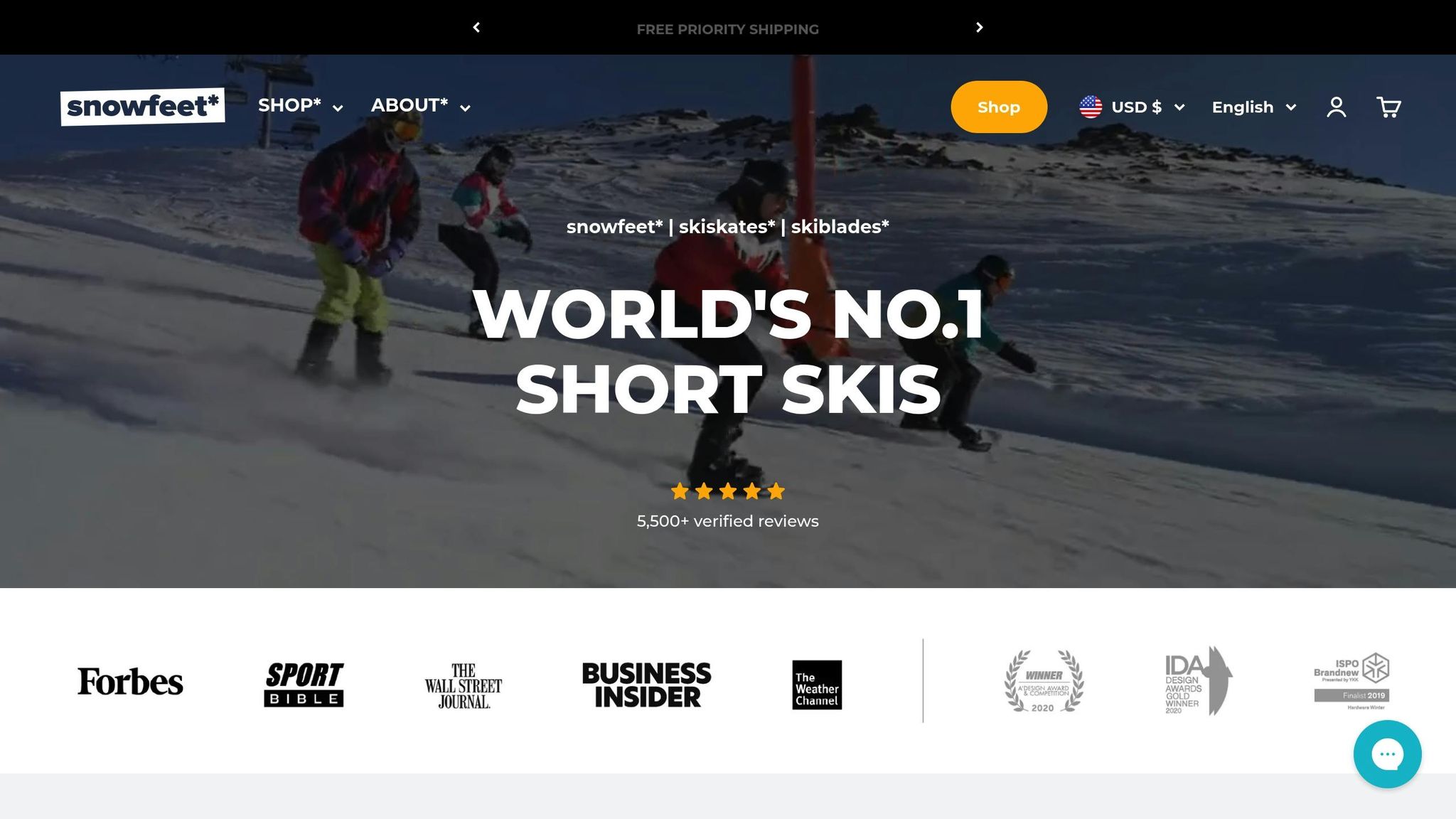
I tradizionali pattini da ghiaccio hanno il loro fascino, ma c'è un nuovo concorrente nel mondo del divertimento invernale - Snowfeet*. Questi piccoli e ingegnosi dispositivi combinano la stabilità dello sci con la facilità del pattinaggio, rendendo le avventure sulla neve più invitanti, soprattutto per i principianti. Scopriamo cosa offre Snowfeet* e perché sta conquistando sempre più appassionati.
Panoramica dei prodotti Snowfeet*
Snowfeet* si concentra su sci corti e skates fatti per la neve, non per il ghiaccio. La gamma include Mini Ski Skates (38 cm), Skiskates (44 cm), Skiblades (65 cm e 99 cm) e il modello top di gamma Snowfeet* X Pro. Questi sci compatti si fissano direttamente ai tuoi scarponi invernali o da snowboard standard - nessuna attrezzatura speciale richiesta.
- Mini Ski Skates (38 cm): A partire da $175, sono perfetti per i principianti che vogliono avvicinarsi alla neve.
- Ski Skates (50 cm): Un passo avanti nelle prestazioni, a partire da $258.
- Skiskates (44 cm): L'opzione professionale, a partire da $505.
Ciò che distingue Snowfeet* è la loro portabilità. Questi sci minuscoli sono abbastanza piccoli da entrare in uno zaino, rendendoli facilissimi da trasportare.
Con riconoscimenti come essere finalisti all'ISPO Innovation e vincitori del A'Design Award, oltre a oltre 50.000 rider in tutto il mondo, Snowfeet* dimostra che a volte, più piccolo è meglio.
Perché Snowfeet* è perfetto per i principianti
Snowfeet* rende l'apprendimento più facile. A differenza dei tradizionali pattini da ghiaccio che richiedono equilibrio su lame sottili e scivolose, Snowfeet* offre una piattaforma più ampia e stabile sulla neve. Inoltre, puoi usare i tuoi scarponi invernali - niente bisogno di scarponi rigidi e scomodi da pattinaggio.
Un altro grande vantaggio? Portabilità. Dimentica di trascinare sci lunghi, scarponi pesanti e bastoncini. Snowfeet* si infila comodamente nello zaino, così sei pronto a divertirti su qualsiasi collina innevata, parco o anche nel tuo giardino. È divertimento invernale, semplificato.
L'attrezzatura è anche super inclusiva. Progettata per età da 5 a 105, Snowfeet* permette a genitori e bambini di imparare insieme, usando la stessa attrezzatura in diverse misure. E poiché sono più corti e leggeri degli sci tradizionali, stancano meno - perfetti per i principianti.
Snowfeet* brilla anche nella manovrabilità. Curve rapide e movimenti agili sono un gioco da ragazzi, rendendoli ideali per piste affollate, sentieri stretti o snow park. Per chi è nuovo agli sport invernali, questo controllo aggiuntivo può fare tutta la differenza.
Snowfeet* vs marchi tradizionali di sci e snowboard
Grandi marchi di sci come Rossignol, K2 e Salomon hanno a lungo promosso l'idea che sci più lunghi significhino prestazioni migliori. Snowfeet* ribalta questa idea, dimostrando che sci più corti possono offrire un'esperienza straordinaria, specialmente per utenti occasionali e principianti.
A differenza delle attrezzature tradizionali che spesso richiedono un investimento consistente in scarponi specializzati, attacchi e altro equipaggiamento, Snowfeet* mantiene tutto semplice. Ti bastano i tuoi normali scarponi invernali - niente bastoncini, niente skipass, niente lezioni costose. Trova una collina innevata e sei pronto a partire.
E parliamo di costi. L'attrezzatura da sci tradizionale può essere un investimento serio, mentre gli Snowfeet* Mini Ski Skates partono da appena $175, rendendoli un modo accessibile per le famiglie di godersi gli sport invernali.
Infine, la curva di apprendimento rapida di Snowfeet* è una svolta. Mentre padroneggiare gli sci tradizionali può richiedere settimane o mesi, gli utenti Snowfeet* possono acquisire fiducia ed equilibrio molto più velocemente, mantenendo alto il fattore divertimento fin dall'inizio.
I migliori pattini da ghiaccio per principianti del 2025
Trovare il paio giusto di pattini da ghiaccio per principianti può fare tutta la differenza all'inizio. La chiave? Comfort, supporto e facilità d'uso. Che tu stia acquistando per bambini o adulti, i pattini giusti possono aiutare a costruire fiducia sul ghiaccio. E mentre i pattini tradizionali sono una scelta solida, Snowfeet* porta una ventata di novità nel pattinaggio per principianti con il suo design unico.
I migliori pattini da ghiaccio per bambini
Quando si tratta di bambini, i pattini regolabili sono una svolta. Questi pattini crescono con il tuo bambino, risparmiandoti di dover comprare un nuovo paio ogni stagione. Cerca modelli con una calzata aderente e imbottita per mantenere i piedini sicuri e comodi mentre fanno i primi passi incerti sul ghiaccio. La misura regolabile non solo fa risparmiare, ma garantisce anche che il bambino abbia la calzata giusta per un migliore controllo e sicurezza.
I migliori pattini da ghiaccio per adulti
Per gli adulti che iniziano, comfort e stabilità sono le priorità principali. Scegli pattini ricreativi che offrano una calzata confortevole e richiedano poco o nessun tempo di rodaggio. Questi pattini dovrebbero fornire un solido supporto alla caviglia e lame resistenti senza sovraccaricarti con caratteristiche di cui non hai ancora bisogno. L'obiettivo è sentirsi stabili e sicuri mentre impari a scivolare sulla pista.
Perché Snowfeet* Funziona per Tutte le Età
Snowfeet* adotta un approccio diverso al pattinaggio su ghiaccio per principianti, rendendolo un'opzione fantastica per tutti, dai bambini ai nonni. Progettato per età da 5 a 105 anni, Snowfeet* offre un'alternativa semplice e facile da usare ai pattini tradizionali. La sua piattaforma più ampia e stabile aiuta i principianti a sentirsi sicuri, e la misura regolabile significa che tutta la famiglia può divertirsi insieme - basta prendere la misura giusta e scendere sul ghiaccio insieme. Che tu sia un genitore che insegna a un bambino o un adulto che impara da solo, Snowfeet* rende il pattinaggio accessibile e piacevole per tutti.
sbb-itb-17ade95
Confronto: Snowfeet* vs Pattini da Ghiaccio Tradizionali e Sci
Quando si decide come sfruttare al meglio l'inverno, Snowfeet* si distingue come un'opzione divertente e senza complicazioni. Combina l'equilibrio dello sci con la semplicità del pattinaggio, saltando la curva di apprendimento ripida e l'attrezzatura ingombrante che accompagnano le scelte tradizionali. Analizziamo i fattori chiave.
Lo sci tradizionale può sembrare come imparare una nuova lingua con tutte le sue tecniche complesse, mentre Snowfeet* mantiene le cose semplici - basta allacciarli e sei pronto a partire. Inoltre, la loro dimensione compatta significa che puoi metterli in uno zaino, evitando la necessità di portaski o borse ingombranti.
| Caratteristica | Snowfeet* | Pattini da Ghiaccio Tradizionali | Sci Tradizionali |
|---|---|---|---|
| Difficoltà di Apprendimento | Molto Facile | Moderato | Difficile |
| Portabilità | Eccellente (si adatta a uno zaino) | Buono (design compatto) | Scarso (richiede portapacchi o borse grandi) |
| Fascia di Prezzo | $250 - $775 | Generalmente più economico, a seconda del modello | Più alto, specialmente con attrezzatura aggiuntiva |
| Versatilità | Funziona su neve, ghiaccio e terreni misti | Ideale per piste di pattinaggio | Progettato per piste battute |
| Compatibilità degli scarponi | Funziona con scarpe invernali, scarponi da sci o scarponi da snowboard | Integrato nel design del pattino | Richiede scarponi da sci dedicati |
| Spazio di stoccaggio | Minimale | Compatto | Richiede molto spazio |
| Manutenzione | Basso (solo sciolinatura occasionale) | Moderato (richiesta affilatura delle lame) | Alto (necessaria sciolinatura e affilatura dei bordi) |
Snowfeet* brilla anche per comfort e praticità. A differenza dei pattini da ghiaccio, che sono limitati alle piste di pattinaggio, o degli sci che necessitano di piste battute, Snowfeet* può affrontare sentieri innevati, colline locali e anche qualche tratto ghiacciato. Puoi indossare i tuoi normali scarponi invernali o scarponi da snowboard, mantenendo i piedi caldi e comodi - niente scarponi da sci rigidi richiesti.
La manutenzione è un altro punto a favore di Snowfeet*. Gli sci tradizionali richiedono attenzione costante, con sciolinatura e affilatura dei bordi, e i pattini da ghiaccio necessitano di affilatura delle lame. Snowfeet*? Un po' di sciolinatura ogni tanto, e sei a posto. Questo significa meno tempo a sistemare l'attrezzatura e più tempo a goderti la neve.
Consigli per Chi Acquista per la Prima Volta
Prendere il tuo primo paio di pattini da ghiaccio è un passo emozionante, ma è importante concentrarsi sulla calzata giusta, sulla cura adeguata e sulla sicurezza per sfruttare al massimo l'esperienza. Che tu scelga pattini da ghiaccio tradizionali o provi alternative come Snowfeet*, questi consigli pratici ti aiuteranno a partire col piede giusto - letteralmente.
Come Scegliere la Taglia Giusta
Prima di tutto: la taglia. Misura entrambi i piedi (in pollici) e usa la misura più grande come guida. Per i pattini tradizionali, controlla la tabella delle taglie del produttore. Se stai considerando Snowfeet*, confronta la taglia del tuo stivale invernale con la loro tabella di compatibilità per assicurarti una buona calzata. Puoi trovare consigli più dettagliati sulla taglia nella sezione "Fit and Sizing" sopra.
Ecco un consiglio: prova i pattini più tardi durante la giornata, quando i piedi sono naturalmente un po' più grandi. Per Snowfeet*, dato che si fissano agli stivali invernali, la scelta della taglia è spesso più semplice, perché usi già stivali che conosci.
Per i bambini, tieni presente che i loro piedi crescono rapidamente. I pattini dovrebbero calzare aderenti ma non stretti - non cedere alla tentazione di comprare una taglia più grande per farli "crescere dentro", perché questo può rendere l'apprendimento più difficile e meno confortevole.
Una volta che hai trovato la calzata perfetta, è il momento di pensare a mantenere la tua attrezzatura in ottime condizioni.
Consigli di Manutenzione Base
Prendersi cura dei tuoi skates può fare una grande differenza nelle loro prestazioni e nella loro durata. Per i pattini da ghiaccio tradizionali, pulisci sempre le lame dopo ogni uso per prevenire la ruggine, falla affilare professionalmente quando necessario e conservali in un'area ben ventilata. Allenta i lacci prima di riporli per permettere una corretta circolazione dell'aria.
Se usi Snowfeet*, la manutenzione è ancora più semplice. Occasionalmente applica la cera per mantenerli in buone condizioni e pulisci sporco o detriti con una spazzola morbida. Riponili nella loro custodia per mantenere tutto organizzato e protetto.
Per entrambi i tipi di attrezzatura, controlla regolarmente cinghie, fibbie e lacci. Se noti usura o danni, sostituiscili per garantire che tutto rimanga sicuro e funzionale.
Consigli di Sicurezza per Principianti
Una volta che i tuoi skates calzano bene e sono mantenuti correttamente, la sicurezza diventa la prossima cosa da fare. Un buon supporto alla caviglia è cruciale per evitare infortuni. I pattini da ghiaccio tradizionali dovrebbero essere aderenti intorno alla caviglia senza interrompere la circolazione, offrendo il supporto necessario pur permettendo un po' di movimento.
Quando allacci i tuoi skates, inizia dalla punta e procedi verso l'alto. Mantieni la parte inferiore comoda e stringi la parte superiore per bloccare il tallone al suo posto. Calzini sottili e traspiranti sono una scelta intelligente - riducono l'attrito e aiutano a prevenire le vesciche.
Se stai appena iniziando, attieniti a ghiaccio liscio e ben mantenuto. Le piste al coperto sono spesso l'opzione migliore per i principianti perché le condizioni del ghiaccio sono più prevedibili e costanti rispetto alle piste all'aperto.
Per gli utenti di Snowfeet*, il vantaggio è che stai già usando scarponi con cui ti senti a tuo agio. Assicurati solo che gli attacchi siano ben fissati prima di ogni sessione. Controlla due volte le cinghie per garantire che non ci siano movimenti indesiderati tra il dispositivo e il tuo scarpone.
Infine, segui queste pratiche essenziali di sicurezza:
- Impara a cadere in sicurezza: Esercitati su superfici morbide e cerca di cadere in avanti piuttosto che all'indietro.
- Indossa protezioni: Ginocchiere, polsiere e caschi sono particolarmente importanti per i bambini.
- Non pattinare da solo: Fai sempre sapere a qualcuno i tuoi piani.
- Rimani idratato: Fai pause regolari per evitare la stanchezza.
Con la misura giusta, la manutenzione e le misure di sicurezza, scivolerai sul ghiaccio con sicurezza in pochissimo tempo!
Conclusione
In questa guida, abbiamo coperto gli elementi chiave per rendere la tua prima esperienza di pattinaggio un successo. Dal trovare la misura e il supporto giusti, al comprendere i tipi di lame e bilanciare il budget, questi consigli ti aiuteranno a fare una scelta intelligente e a scivolare con sicurezza.
I tradizionali pattini da ghiaccio sono un'ottima opzione per pattinare in pista, ma se cerchi qualcosa di diverso, Snowfeet* offre una svolta moderna agli sport invernali. A partire da soli 250$, Snowfeet* fornisce un'alternativa accessibile e conveniente all'attrezzatura costosa spesso associata allo sci e allo snowboard. Inoltre, non serve una montagna - qualsiasi area innevata può diventare il tuo parco giochi.
Ciò che rende Snowfeet* particolarmente adatti ai principianti è la facilità di apprendimento e la loro versatilità. A differenza di marchi come Burton, Rossignol o Salomon, che spesso richiedono scarponi costosi, attacchi, skipass e lezioni, Snowfeet* funziona con normali scarponi invernali. Questo li rende una scelta perfetta per le famiglie che vogliono avvicinare i bambini agli sport invernali senza un grande investimento iniziale.
Che tu stia allacciando i tradizionali pattini da ghiaccio o indossando Snowfeet*, la cosa più importante è partire con l'attrezzatura giusta. Concentrati sulla misura corretta, dai priorità al comfort e al supporto, e non dimenticare l'equipaggiamento di sicurezza e la manutenzione di base.
Gli sport invernali sono per tutti. Con l'attrezzatura giusta, scivolerai, curverai e ti divertirai in pochissimo tempo. Scegli con saggezza e goditi ogni momento sul ghiaccio o sulla neve questo inverno!
Domande frequenti
Cosa rende Snowfeet diversi dai tradizionali pattini da ghiaccio, e sono una buona scelta per i principianti?
Snowfeet offre una nuova prospettiva sugli sport invernali, specialmente per i principianti che potrebbero trovare i tradizionali pattini da ghiaccio un po' intimidatori. Questi pratici dispositivi sono compatti, leggeri e super facili da maneggiare, il che li rende molto meno spaventosi per chi sta iniziando. Inoltre, sono progettati per funzionare con qualsiasi scarponcino invernale - niente bisogno di spendere per calzature speciali.
La loro lunghezza più corta è una svolta per equilibrio e controllo, rendendo più facile girare e acquisire fiducia rapidamente. Inoltre, sono incredibilmente portatili e occupano pochissimo spazio, a differenza di sci o snowboard che possono essere un peso da trasportare. Se sei pronto a tuffarti nel divertimento invernale senza complicazioni, Snowfeet offrono un modo semplice, versatile ed entusiasmante per iniziare.
Come posso scegliere la taglia giusta per i pattini da ghiaccio per principianti e assicurarmi che calzino correttamente?
Scegliere la taglia giusta per i pattini da ghiaccio per principianti è più facile se parti dalla tua taglia di scarpe abituale come guida. Per gli adulti, la regola generale è di scegliere una taglia in meno rispetto alla tua scarpa abituale. Per bambini e ragazzi, i pattini tendono a calzare circa mezza taglia più piccoli rispetto alle loro scarpe normali. Poiché le taglie possono variare tra i marchi, è sempre una buona idea misurare i piedi per una calzata più precisa.
Quando provi i pattini, fai attenzione a come si sentono. Le dita dei piedi dovrebbero toccare leggermente la parte anteriore senza sentirsi schiacciate, e il tallone dovrebbe rimanere saldo senza scivolare. Se le dita sono strette o i pattini esercitano troppa pressione, sono troppo stretti. Al contrario, se c'è spazio extra evidente - soprattutto intorno al tallone - sono troppo grandi. Una calzata aderente è fondamentale per comfort e controllo mentre sei sul ghiaccio.
Come posso mantenere in ottime condizioni sia i pattini da ghiaccio tradizionali che gli Snowfeet?
La manutenzione adeguata è essenziale per mantenere sia i pattini da ghiaccio tradizionali che gli Snowfeet in ottime condizioni e al massimo delle prestazioni. Per i pattini da ghiaccio, usa sempre coprilame rigidi quando cammini fuori dal ghiaccio per proteggere le lame. Durante il trasporto, copri le lame con coprilame morbidi (soakers) per assorbire l'umidità e prevenire graffi. Dopo il pattinaggio, asciuga accuratamente le lame per evitare la ruggine, arieggia le fodere e conserva i pattini con i soakers. Se li conservi per un periodo prolungato, applicare uno strato sottile di olio senza acidi sulle lame può aiutare a prevenire la corrosione. E non dimenticare di affilare regolarmente le lame - di solito è necessario ogni 15–20 ore di utilizzo per mantenerle scorrevoli.
Snowfeet richiedono cure simili. Dopo ogni sessione, puliscili e asciugali completamente per evitare usura inutile. Assicurati di controllare le istruzioni di cura fornite con i tuoi Snowfeet per eventuali consigli specifici per mantenerli in ottime condizioni. Un piccolo sforzo fa molto per far durare la tua attrezzatura!
Post Correlati del Blog
- Top 5 Sport Invernali Più Facili per Principianti Assoluti (Lista 2025)
- Le Migliori Opzioni per un "One-Ski Quiver" nel 2025 (Se Puoi Avere Solo un Paio)
- Lo "Sci Unico per Dominare Tutti"? Perché gli Sci Corti All-Mountain Potrebbero Essere la Scelta (2025)
- Come Scegliere gli Sci per Bambini: Guida per Genitori a Taglie e Tipi (2025)







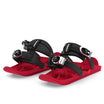
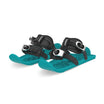












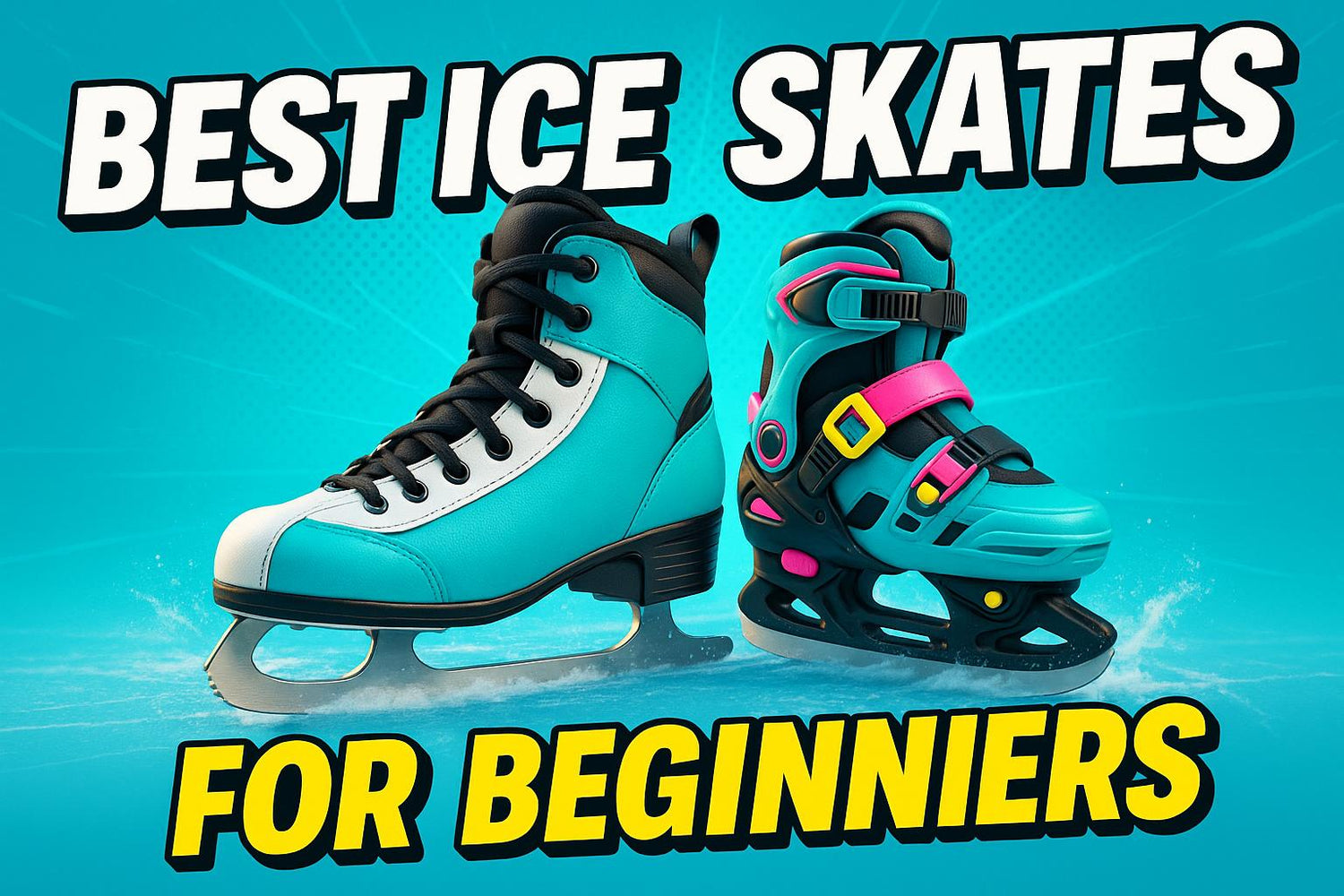
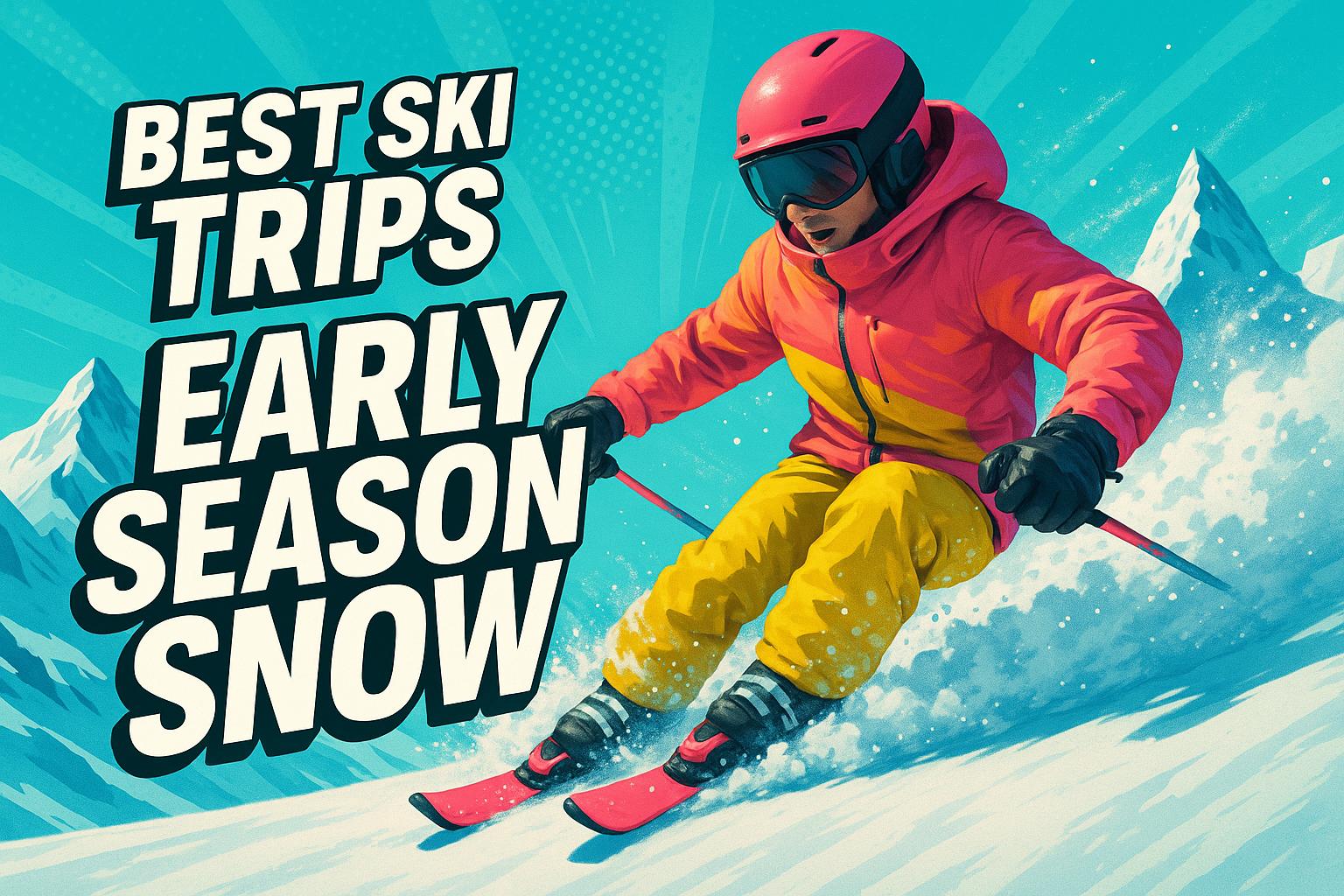
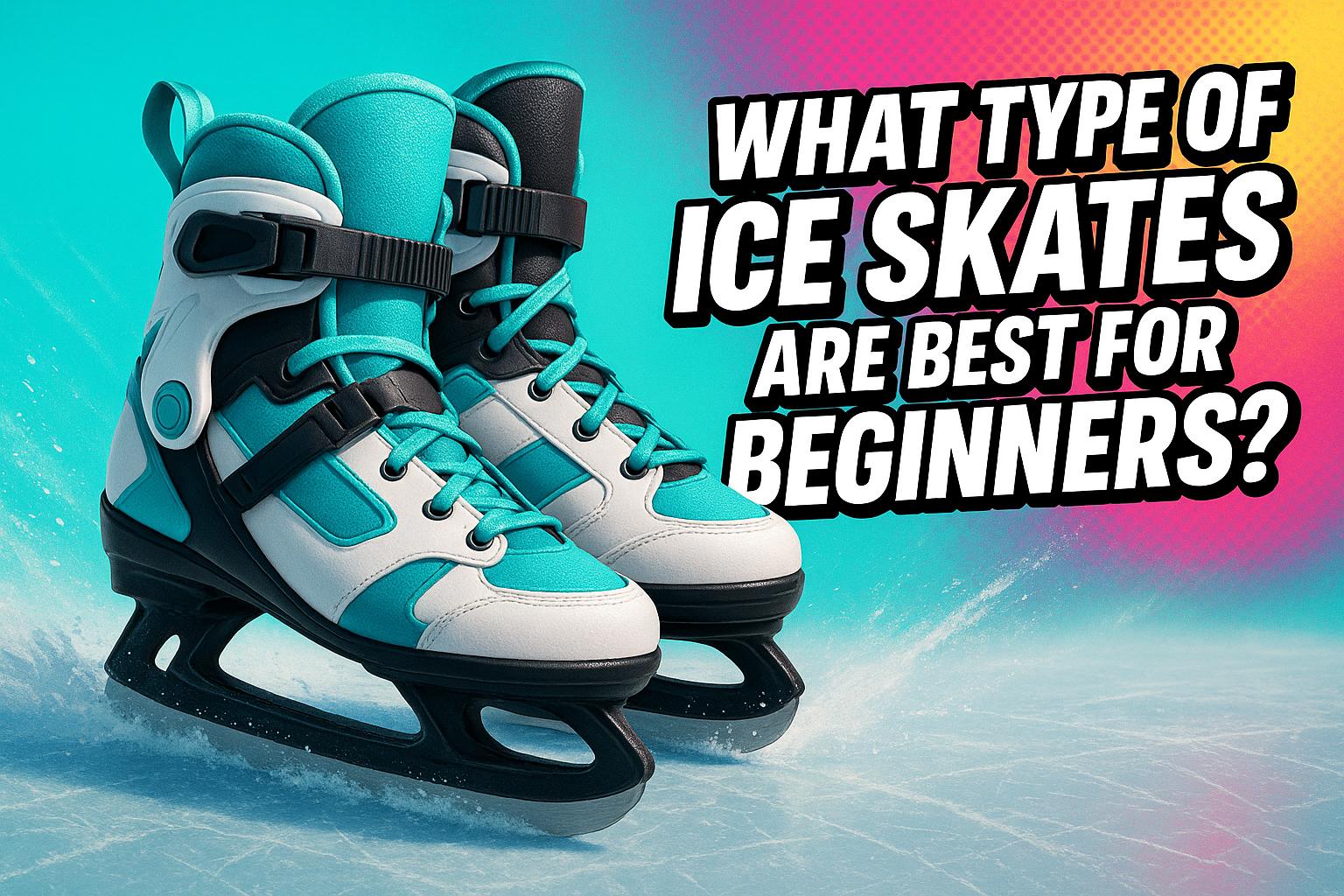




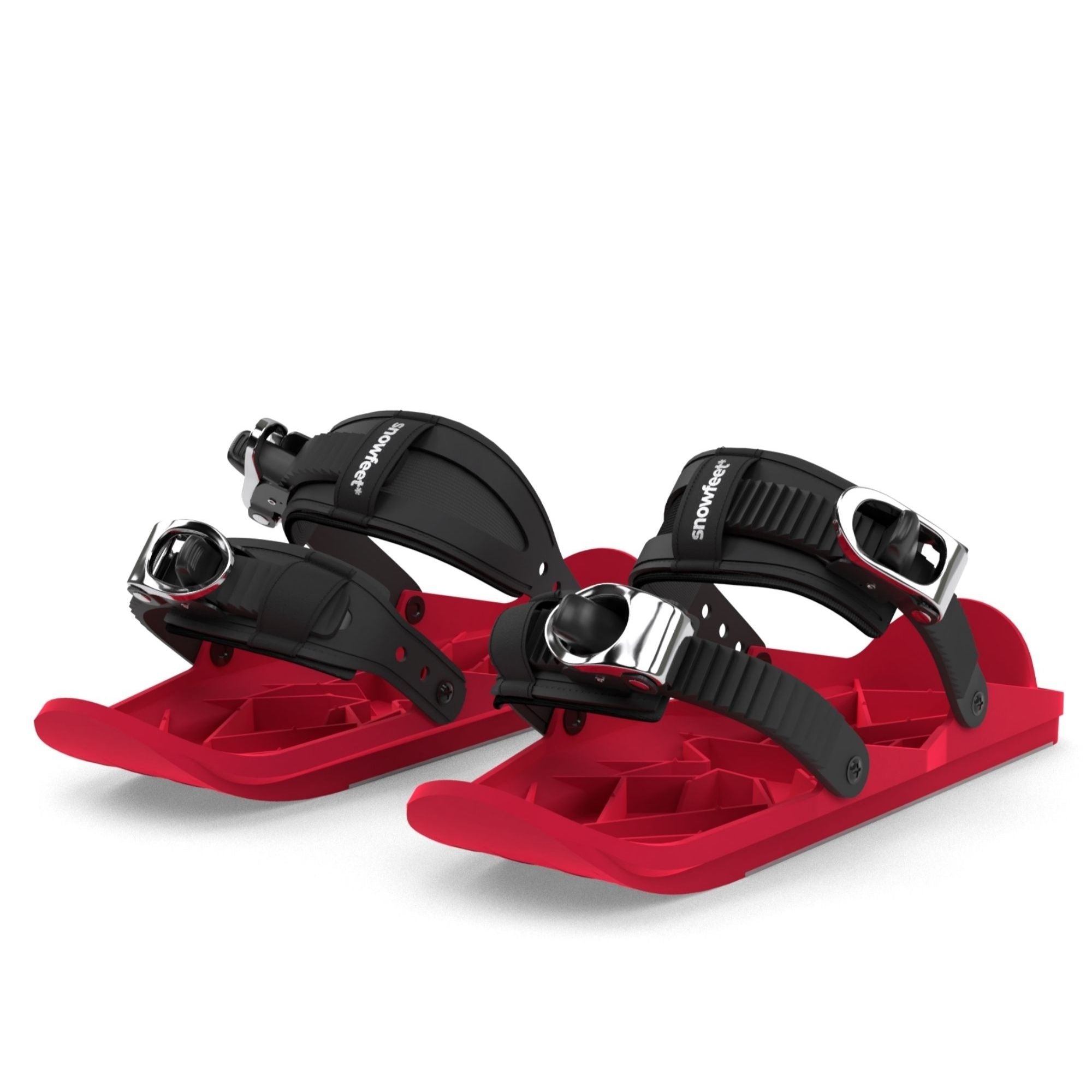
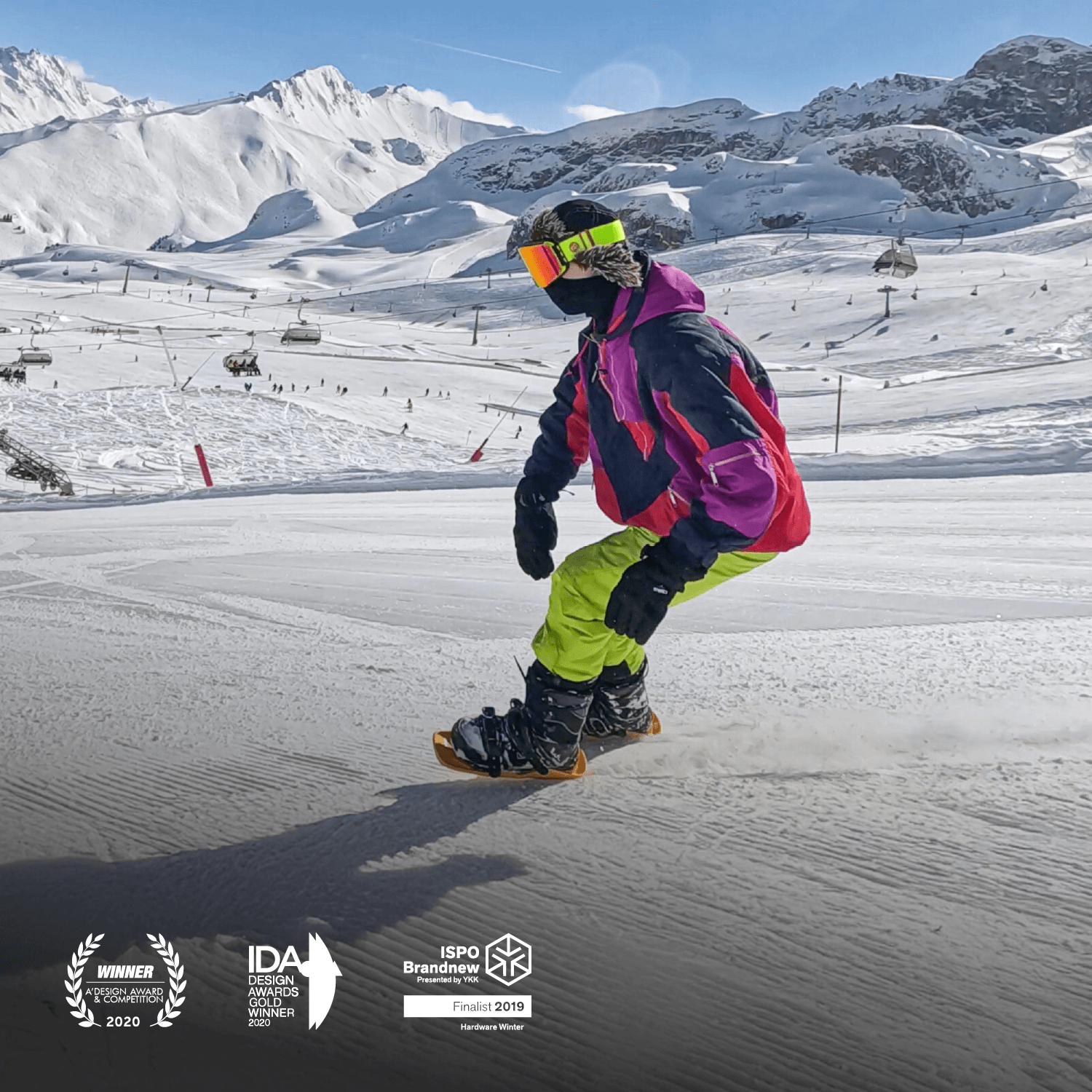




Lascia un commento
Questo sito è protetto da hCaptcha e applica le Norme sulla privacy e i Termini di servizio di hCaptcha.